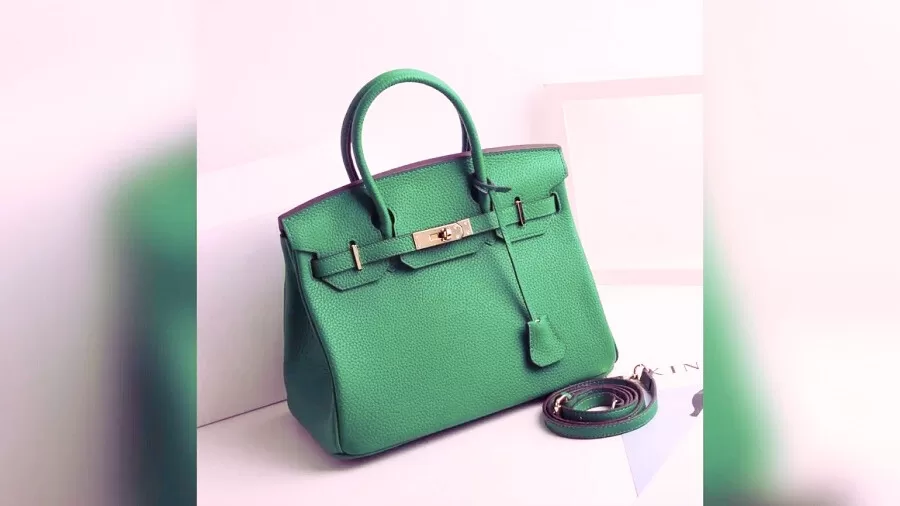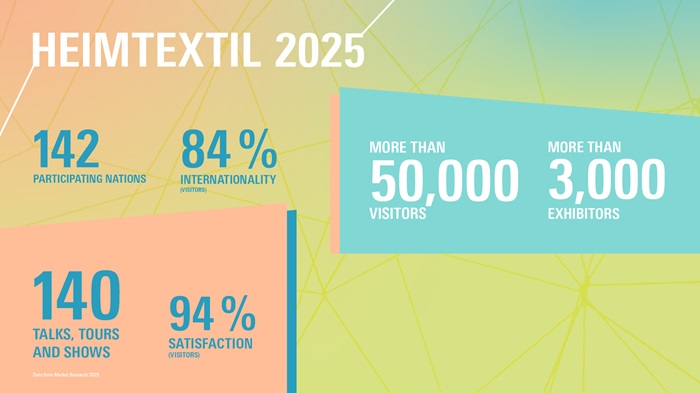FW
The Global Organic Cotton Community has called for an Organic Cotton World Day. It feels the benefits of organic cotton should be better communicated to consumers, as consumers still do not know about the chemicals used in cotton production and do not make the link between organic food and organic cotton.
One suggestion is, consumer habits should be driven by clothing companies and this can be done by re-engineering the value chains and product offerings. Some brands now produce their collection exclusively with organic cotton, thus making their consumers buy organic and opening the idea of organic to them.
The Global Organic Cotton Community platform was created for members of the global organic cotton community to share conversations, knowledge and information about organic and fair trade cotton.
In 2008, Helvetas (the Swiss Association for International Cooperation) and ICCO (Dutch Interchurch Organisation for Development Co-operation) intensified their collaboration in the area of organic and fair trade cotton. They felt the need to have additional tools and processes to exchange views, opinions and experiences, both among themselves and with other people working in the organic cotton sector. So they decided to establish and run a web platform. The web platform went live in June 2009.
www.organiccotton.org/
Global fashion giants routinely source cellulosic fibers including rayon and viscose from endangered forest regions. Environmental organization, Canopy is working to create awareness about this problem. It aims to tackle supply chain transparency in sourcing fibers. Canopy has shown how fibers from threatened forests are routinely being used in rayon, viscose and modal fibers. These fibers are used in suit linings, dresses, skirts and T-shirts. It warns that the dissolving pulp or viscose industry is poised for continued ambitious expansion and poses an increasing risk to threatened forest ecosystems around the world. It feels, commitments by brands will help curtail the problem and build solutions.
Companies like H&M are supporting this initiative. H&M wants to play a strong role in ensuring a future for the planet’s ancient and endangered forests. It is committed to exploring its supply chain and doing its utmost to avoid these fabrics within the next three years. It is taking additional steps of encouraging leaders throughout the supply chain to support conservation in endangered forests and use alternative inputs, for example, recycled clothing.
The Japanese market is facing a shortage of jacquard fabric for summer 2014 and also possibly for winter 2014. Japanese companies wanting to use jacquard fabric to produce garments have to start production planning as soon as possible.
Most Japanese apparel companies have taken to the jacquard fabric in a big way as it has a strong fashion element. Patterns range from dobby to the more complex variety. The design is superior to the ordinary woven or knitted fabrics. Large flower-shaped jacquard fabrics, Matt Lacey embossed fabrics are received well by the market. In terms of design, patterns with a three-dimensional effect have also become popular. Wool blends have come into jacquard.
Jacquard production is time consuming. The preparation process involves various types of materials. The overall production capacity of major jacquard producers has declined substantially. Jacquard fabrics have a high requirement of yarn dyeing and yarn dyed process. Only certain machines can produce printed jacquard fabric. Since the spring series of clothing uses more cotton, linen, silk and synthetic fibers and thin high-density material, fabrics of the specified concavity, luster and elasticity is also required.
The government of Bangladesh has decided to form a council to deal with various problems in the readymade garment sector. The Alternative Dispute Resolution (ADR) council will be formed by this month. Victims of accidents in the readymade garment sector will be able to file their complaints with this council. The council will reach decisions upon hearing from both sides.
Bangladesh has made progress in Generalised System of Preferences and the US seems to be satisfied with the initiatives. For instance, 200 inspectors have to be appointed in the apparel sector and 68 inspectors have already been appointed. A publicly accessible garment workers' database has now gone online.
The US had expressed concern over labor unrest in the readymade garment sector. But Bangladesh says that now the situation is totally normal and calm and hopes to sign the preferential trade agreement and free trade agreement with different countries in the days to come. The Bangladesh Labor Act may be extended to export processing zones.
Bangladesh hopes for a surge in trade and investment relations with the US. A Trade and Investment Cooperation Forum Agreement (TICFA) meeting, the first of its kind, is scheduled to be held later this month.
China will invest more than a billion dollars to boost the textile industry in the country's largest cotton producing region, the Xinjiang Uyghur region, in western China. The investment will be used to attract garment manufacturers from other provinces, build infrastructure, and to subsidise existing local textile companies by lowering taxes and subsidising logistics costs.
Ürümqi, Xinjiang's capital, has been earmarked for development as the regional textile and apparel trading centre, while Aksu, Shihezi and Korla have been designated as three textile industrial cities. The investment is expected to add a million jobs in Xinjiang and help the region export apparel and textile products to Europe, Central Asia, Western Asia and South Asia.
Xinjiang is one of the poorest regions in China and has been subject to recent political instability. It’s the largest of China’s regions and provinces. Xinjiang is a vast region in western China, torn by tensions between the Muslim Uighurs, who number about 10 million, over 40 per cent of Xinjiang's total population and the majority Han Chinese, leading to periodic violence.
Meanwhile, large textile industrial parks will be located in seven cities in the counties if Hami city, Bachu county, Alar city, Xayar county, Manas county, Kuytun city and Khorgas town.
Leading Japanese flat knitting machine builder Shima Seiki has added a new SWG-N2 series to its compact class of wholegarment flat knitting machines. The SWG-N2 series features Shima’s proven R2CARRIAGE system for higher productivity and a larger number of yarn carriers and holding hooks for yarn cutting, as well as a separate yarn holder with increased capacity, which allows for even more flexibility in multi-color knitting.
The R2 (Rapid Response) system features an advanced carriage mechanism combined with improved software programming that achieves quicker carriage returns after each course. Featuring the company’s renowned SlideNeedle on a 10, 16, 24 and 36 inch wide needle bed respectively, the SWG021N2, SWG041N2, SWG061N2 and SWG091N2 are capable of producing a range of fashion accessories from gloves, socks, hats, mufflers, neck-ties and other small items, as well as children’s wear and even leggings and tank tops, all in their entirety, with no sewing or linking required. As a result, the usable range of a given yarn can be expanded to include coordinated items from head to toe for all ages.
In addition to their established reputation in the fashion industry, SWG021N2, SWG041N2, SWG061N2 and SWG091N2 are also capable machines for technical textiles, such as industrial material, sports, medicine and safety.
www.shimaseiki.com/
Bangladesh readymade garment (RMG) industry needs to invest Tk 80 billion to improve compliance and fire safety levels after the recent calamities at Tazreen Fashions and Rana Plaza, which claimed several lives. Bangladeshi sector has been under pressure from local and international stakeholders including Accord, Alliance, foreign buyers and International Labour Organization (ILO). The Accord and Alliance is formed to closely monitor and ensure factory safety in Bangladesh.
According to Bangladesh Garment Manufacturers and Exporters Association (BGMEA) and Bangladesh Knitwear Manufacturers and Exporters Association (BKMEA), more than 2500 garment owners including woven and knitwear have agreed to make new investment of Tk 80 billion for fulfilling the compliances and fire safety conditions.
Workers' safety system, fire-fighting equipment, evacuation mechanism, proper installation of machines and healthy work environment are among the social compliance issues demanded by the international companies and organisations. The garment makers are now bound to seriously look into the safety issues for their own survival. According to the BGMEA research cell, nearly 1,857 garment workers have so far died in different tragic accidents from the year 1990 to 2013.
www.bgmea.co.bd
Demand for antimicrobial fibres, textiles and apparel is expected to grow in a big way, says Textiles Intelligence in its issue on Performance Apparel Markets. Demand will be spurred primarily by growing awareness among consumers about the importance of personal hygiene and health risks posed by certain microorganisms.
Also, the promotion of healthier and more physically active lifestyles will drive demand, as consumers look to purchase sportswear and fitness apparels with antimicrobial properties. Moreover, greater use of fabrics, particularly cotton, which are prone to harbouring large bacterial colonies will present opportunities for antimicrobial fibres, textiles and apparel, the report said.
It further added that between 2013 and 2018, the global market for antimicrobial agents for all end uses, including textiles, is forecast to grow by nearly 12 per cent, per annum. However, there is concern among consumers that some agents used to provide textiles and apparels with antimicrobial properties -- notably silver nanoparticles and triclosan, are toxic. Such agents can become dislodged from a textile during laundering and thereby pollute water sources. Also, they can come into contact with the skin and cause skin irritation.
Amid these concerns, manufacturers are stepping up their efforts to develop effective and durable antimicrobial technologies which are less likely to be harmful to human health and the environment and which comply with environmental certifications. As a result of such developments, antimicrobial products which are likely to record the strongest gains in sales over the coming years will be those that offer the highest efficacy and durability while posing little or no threat to the safety of consumers or the environment, report said.
www.textilesintelligence.com
The European Committee of Textile Machinery Manufacturers, CEMATEX, has announced that it will provide a grant to all participants of the Research & Education Pavilion at ITMA 2015. Owing to strong response and positive feedback following its initiative at ITMA 2011, the committee has decided to continue to provide the grant to pavilion participants at ITMA 2015. The ITV Institute of Textile Technology and Process Engineering Denkendorf, Germany, is among the first to support ITMA 2015.
The Research & Education Pavilion at ITMA 2015 will continue to provide outstanding opportunities to research organisations and higher institutions of learning to share their R&D achievements, as well as current and future projects with the industry. In addition, the pavilion will feature a ‘Speakers Platform’ for participating institutes to share their latest knowledge and projects.
A technical committee is being formed to select presentations for the ‘Speakers Platform’. The Research & Education pavilion provides a platform for ITMA visitors to keep abreast with the latest research projects on garments, home textiles as well as technical textiles and nonwovens. The pavilion was a major feature at 2011 ITMA exhibition in Barcelona, Spain with 48 exhibitors from 20 countries taking part.
ITMA 2015 will be held from November 12 to 19, 2015 at Fiera Milano Rho in Milan Italy. Owned by CEMATEX, ITMA is the world’s largest textile and garment technology showcase, which being organized since 1951. The European Committee of Textile Machinery Manufacturers (CEMATEX) comprises national textile machinery associations from Belgium, France, Germany, Italy, Netherlands, Spain, Sweden, Switzerland and the United Kingdom.
Polyester has become China's new stockpiling strategy as the country is gearing up for a future where cotton, with its potentially sizeable environmental footprint, will become increasingly scarce and could increase significantly in price.
China’s polyester filament capacity has been rising. It was up 17 per cent in 2013 with another 8 per cent rise expected in 2014. Recent years saw China stockpiling cotton in a move to protect Chinese farmers from world prices and volatility while also maintaining a supply of cotton to its own industry. However, the country is now reducing its stock piles, and these new figures for polyester suggest it sees manmade fibers as where the future lies.
China’s polyester capacity is easily outstripping global mill consumption. In 2013, it was 5 per cent above global mill consumption, and by 2015 it’s expected to be 12 per cent above. In nylon filament China’s capacity is growing more quickly than global mill consumption, being forecast to represent 70 per cent of world nylon filament demand within the next two years.
In 2013, global polyester consumption was 6 per cent up on the previous year, a rate of increase that is also expected for 2014.











